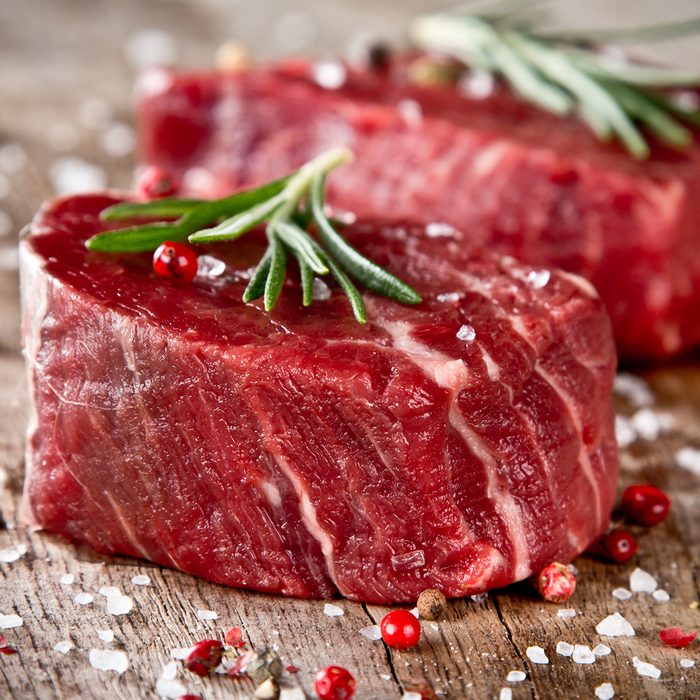
Some steaks are thick, others are thin
They all weigh the same, but many steakhouses cut their steaks to different widths to make it easier to accommodate different cooking temperatures. Thicker steaks are much easier to cook to medium rare, whereas thinner cuts will reach well-done temperatures more quickly. Learn the secret to cooking a thick-cut steak at home.
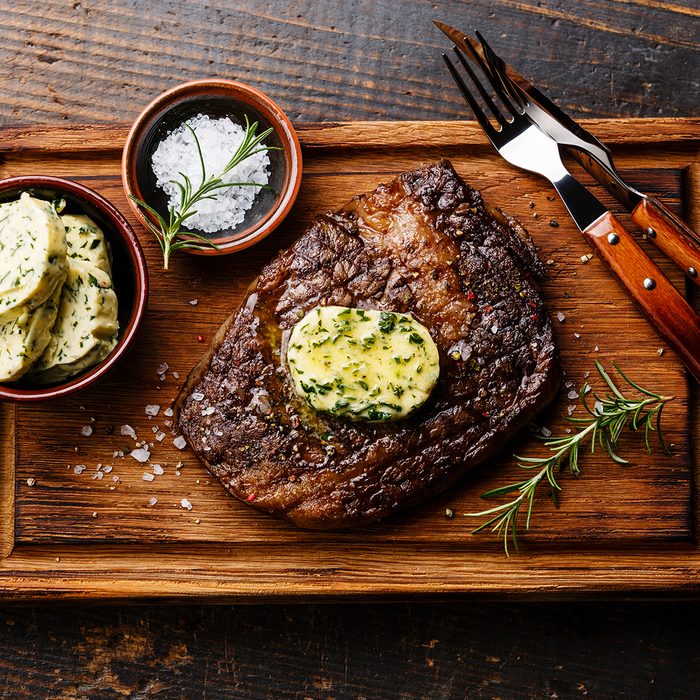
It’s all about the butter
Your steak probably tastes better at a steakhouse because we use lots (and lots) of butter. Bonus points when it’s compound butter! Even the dishes that aren’t served with a pat of butter on top are likely doused with a ladle of clarified butter to give the steak a glossy sheen and a rich finish.
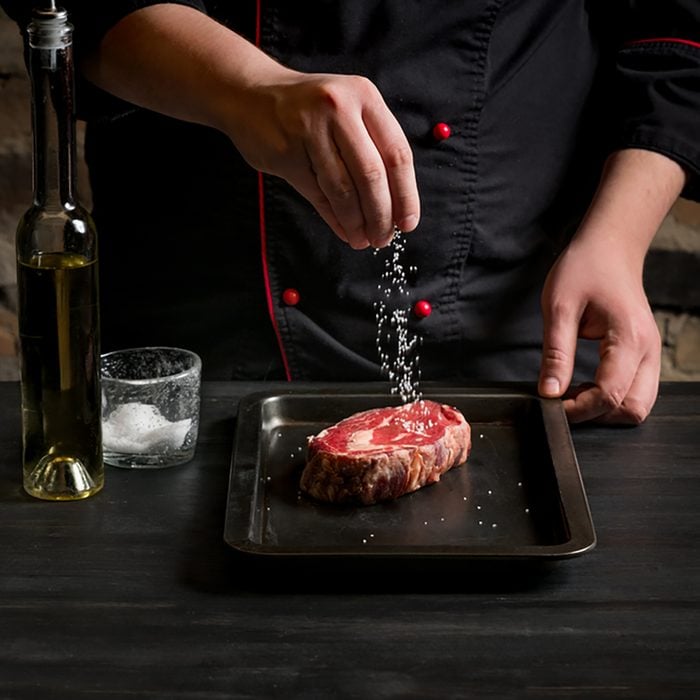
Salt, salt and more salt
The pros really know how to season meat. Coating the steak with an even layer of salt brings out the meat’s beefy flavors. You might be shocked at how much salt we use, but almost no one sends back a steak because it’s overseasoned. Underseason it, though, and the customers will complain that it tastes bland.
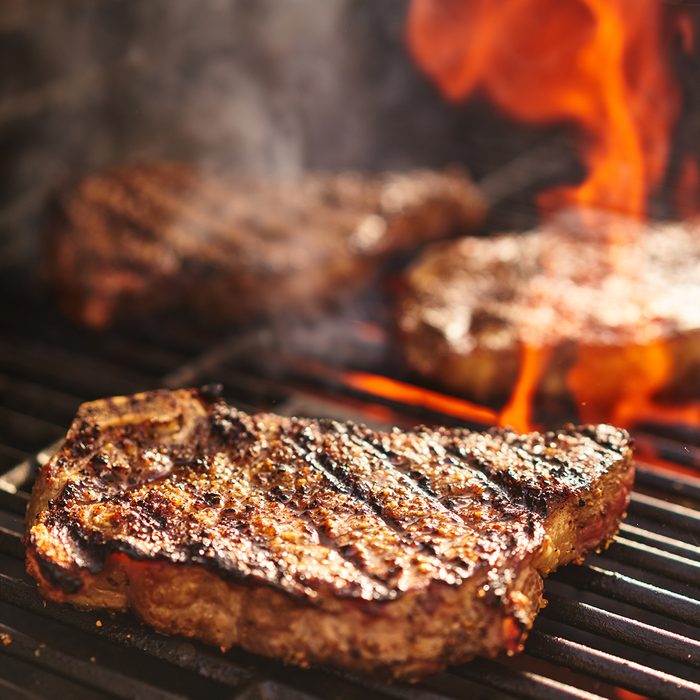
Super high heat creates the best crust
If you want to replicate steakhouse dinners at home, crank up the heat. A restaurant’s wood-fired grills can reach upwards of 700° F, and fancy steakhouses use infrared grills that can get over 1,000° F. The best way to replicate those conditions is to use a charcoal grill, but a smoking-hot cast-iron skillet works in a pinch, too.
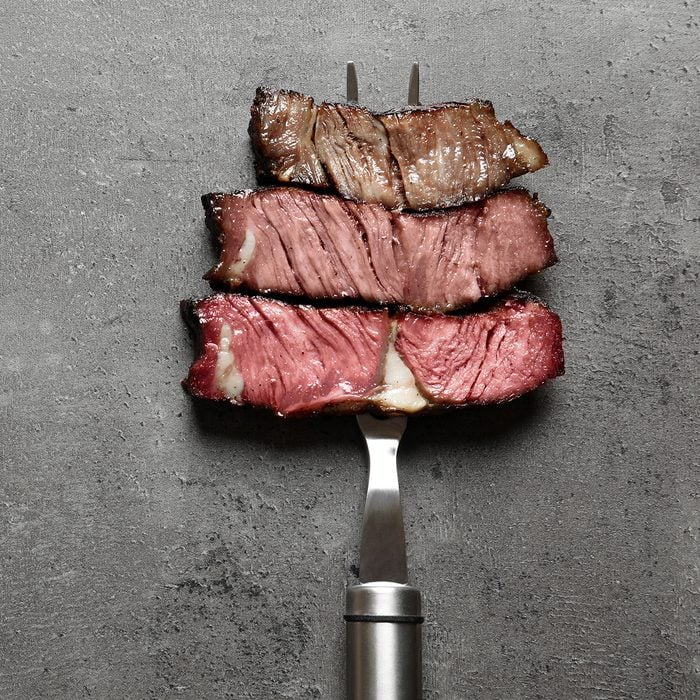
Practice makes perfect
How do steakhouse chefs know when your steak is finished cooking? Some use a meat thermometer (which is what you should do at home), but many have developed a sixth sense. After you prepare hundreds of steaks, you just know what medium rare feels like when you poke the meat with your finger!
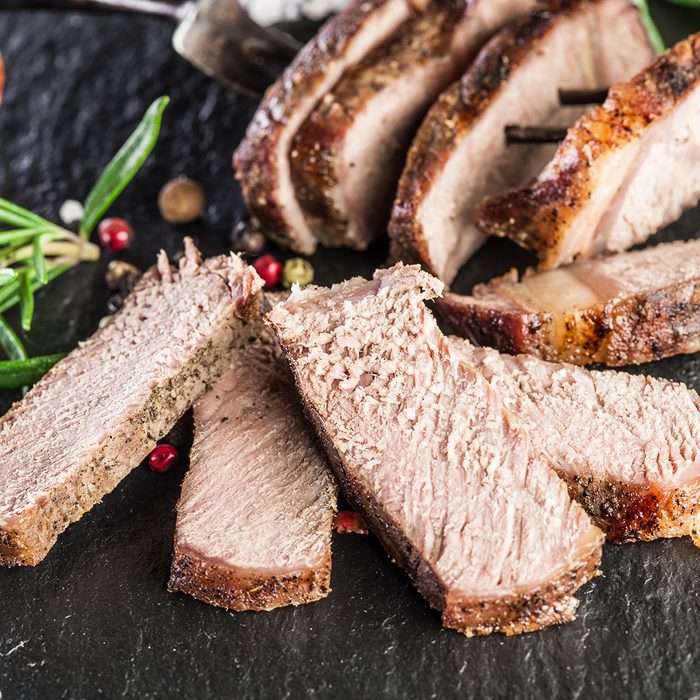
Orders for well-done steaks annoy us
Cooks are a finicky bunch, and those well-done steak orders tend to get under our skin. They take longer to cook than any other item on the ticket, so it takes more effort to get the food to finish at the same time. We’ll do it, but we probably won’t be happy about it. This is how to order a steak the right way.
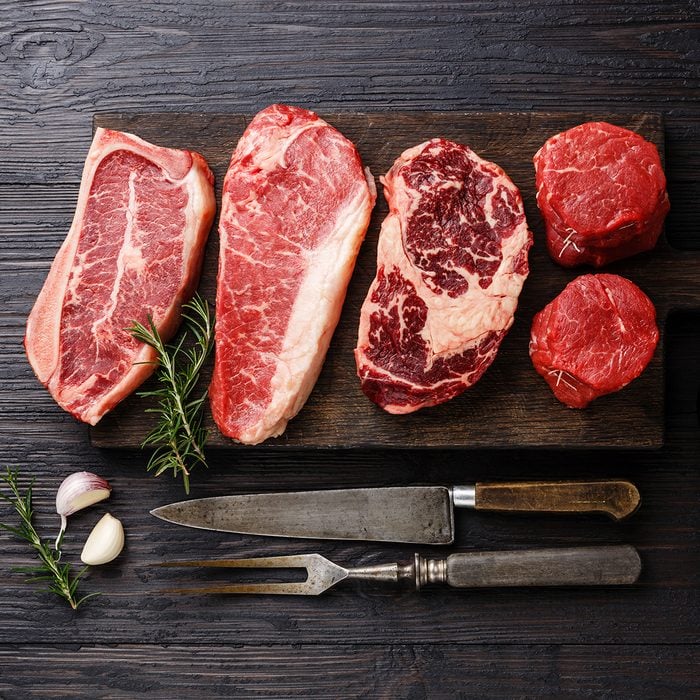
Unless it says Prime beef, it’s not
You might assume fancy restaurants source the best quality beef, but many of them do not. Most steakhouses use Choice beef, and not just because it’s less expensive. Only 2% of the beef produced in the United States is classified as Prime!
By the way—we found the best steakhouse in all 50 states.
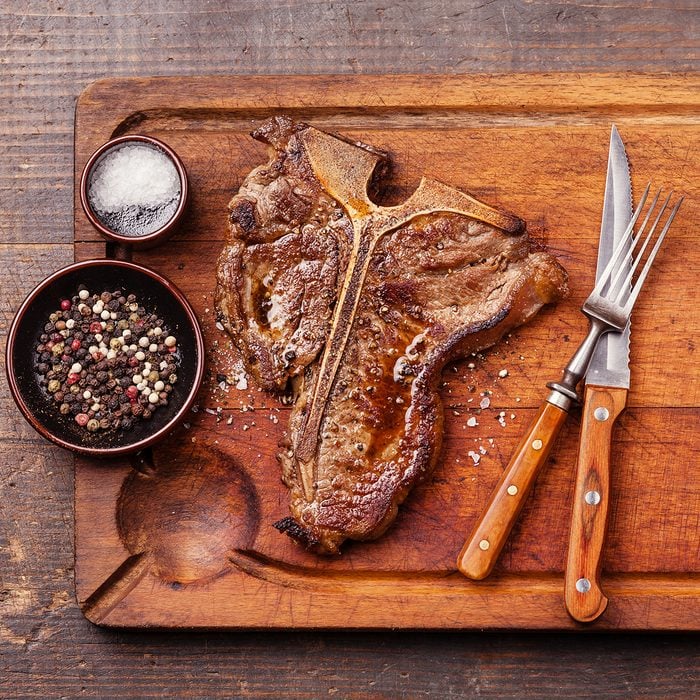
Grill a bone-in steak, griddle a boneless one
Grilling isn’t necessarily the best way to cook a steak; boneless steaks actually cook better on a flat surface. You likely don’t have a restaurant-style flat top griddle at home, but you can use a cast-iron skillet to achieve similar results.
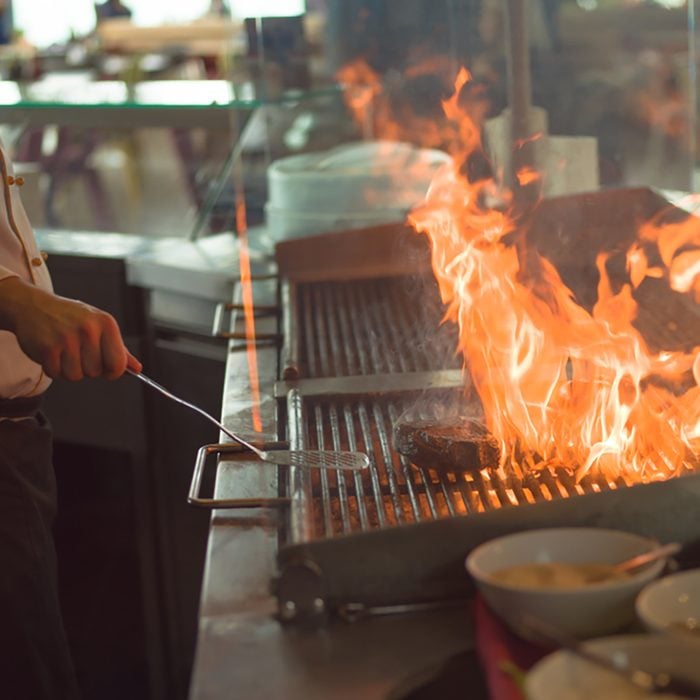
It’s hot and sweaty back there
If you’ve ever been designated the grill master at a backyard barbecue, you know how hot that grill can get. Imagine doing that for an eight-hour shift! Many steakhouse restaurants also require cooks to wear gloves, and it gets pretty sweaty underneath the plastic.
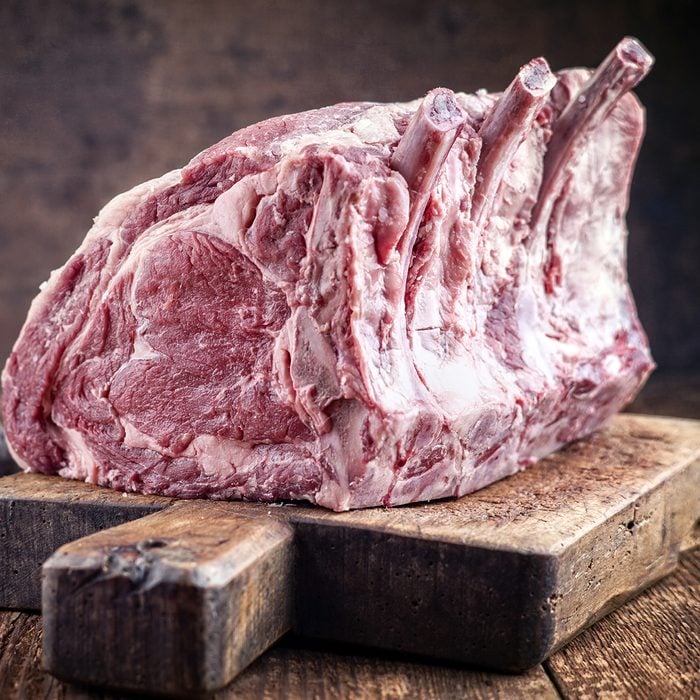
Dry-aged doesn’t mean it happened in house
Many steakhouses have expensive, dry-aged steak options on the menu, but that doesn’t mean they’re aging the beef in the back room. The process requires a specific environment to safely dehydrate the meat and concentrate its flavor, so most restaurants order them from high-end butchers.
